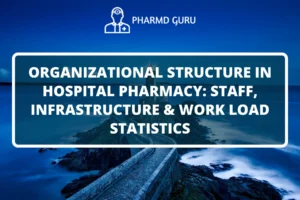The manufacture of sterile formulations, particularly large and small volume parenterals, is a critical process in the pharmaceutical industry. These sterile preparations, administered via injection, play a vital role in delivering medications directly into the bloodstream. This article explores the manufacturing processes involved in producing sterile formulations, focusing on large and small volume parenterals, as well as the importance of quality control and regulatory compliance.
SCROLL DOWN TO THE BOTTOM OF THE PAGE FOR ACTUAL NOTES
TABLE OF CONTENTS:
- Introduction
- Large Volume Parenterals (LVP)
- Small Volume Parenterals (SVP)
- Manufacturing Process of Sterile Formulations
- Quality Control and Testing
- Regulatory Compliance
1. Introduction
Sterile formulations, particularly parenterals, are pharmaceutical preparations that are free from viable microorganisms. These formulations are designed to be administered via injection, allowing for rapid and direct delivery of medications into the bloodstream. Large volume parenterals (LVP) and small volume parenterals (SVP) are two common types of sterile formulations manufactured to meet the diverse needs of patients.
2. Large Volume Parenterals (LVP)
Large volume parenterals are sterile solutions or suspensions that are typically packaged in containers with volumes exceeding 100 mL. They are used for intravenous (IV) administration to provide hydration, deliver nutrients, and administer medications over an extended period. Examples of LVP include saline solutions, dextrose solutions, and intravenous antibiotics.
3. Small Volume Parenterals (SVP)
Small volume parenterals are sterile solutions or suspensions that are packaged in containers with volumes typically ranging from 1 mL to 100 mL. They are used for various purposes, including the administration of potent medications, antibiotics, vaccines, and diagnostic agents. SVPs are commonly administered via intravenous, intramuscular, or subcutaneous routes.
4. Manufacturing Process of Sterile Formulations
The manufacturing process of sterile formulations, including both LVP and SVP, involves the following key steps:
a. Formulation Development: The formulation is developed, considering the active pharmaceutical ingredient (API), excipients, and the desired characteristics of the sterile formulation, such as pH, osmolality, and stability.
b. Sterilization: The formulation is subjected to a sterilization process to eliminate any viable microorganisms. Common sterilization methods include autoclaving (steam sterilization), filtration, and aseptic processing.
c. Filling and Packaging: The sterile formulation is filled into appropriate containers, such as vials or ampoules, using aseptic techniques to maintain the sterility of the product. The containers are then sealed and labeled with relevant information.
d. Quality Assurance: Throughout the manufacturing process, strict quality assurance measures are implemented to ensure the sterility, purity, and potency of the sterile formulation. This includes rigorous testing of raw materials, in-process monitoring, and final product testing.
5. Quality Control and Testing
Quality control is of paramount importance in the manufacturing of sterile formulations. Rigorous testing and monitoring are conducted throughout the entire manufacturing process to ensure the safety, efficacy, and sterility of the products. Quality control measures include:
- Microbiological Testing: Samples are tested for microbial contamination to ensure the absence of viable microorganisms.
- Particulate Matter Testing: The formulation is examined for the presence of particulate matter, which can adversely affect the safety and efficacy of the product.
- Sterility Testing: The final product is subjected to sterility testing to confirm the absence of viable microorganisms.
- Chemical Analysis: The formulation is analyzed for chemical composition, potency, and purity.
6. Regulatory Compliance
The manufacture of sterile formulations, especially large and small volume parenterals, is strictly regulated to ensure patient safety and product quality. Regulatory authorities, such as the FDA, require pharmaceutical manufacturers to comply with Good Manufacturing Practices (GMP) specific to sterile products. Compliance with these guidelines ensures the use of appropriate manufacturing techniques, equipment, and quality control measures.
ACTUAL NOTES




